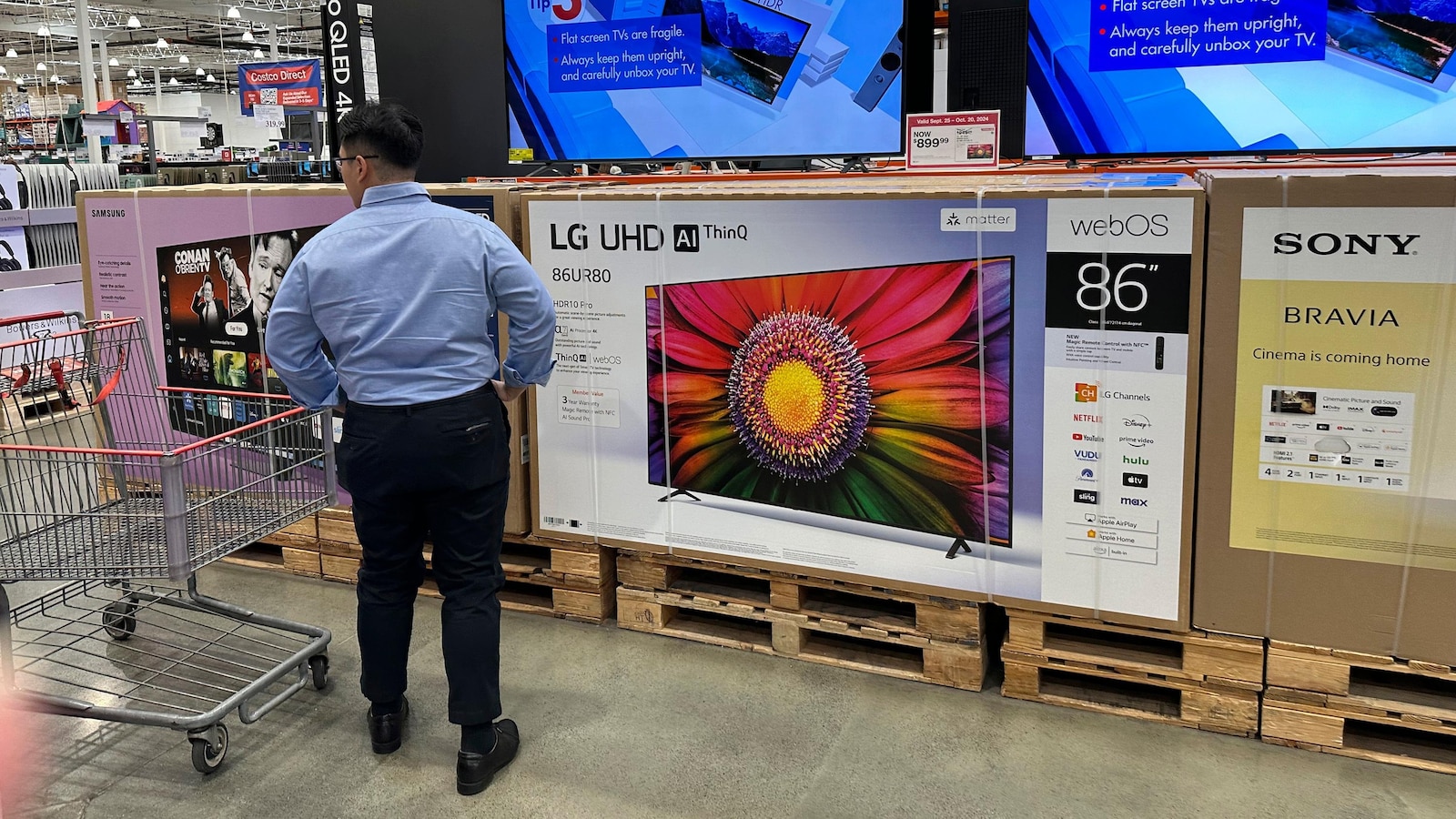
WASHINGTON — U.S. inflation last month likely reached its lowest point since February 2021, paving the way for a new interest rate cut by the Federal Reserve and add to the flow of encouraging economic data that has emerged in the final weeks of the presidential campaign.
The consumer price index is expected to rise just 2.3% in September from 12 months earlier, compared with August’s 2.5% annual increase, according to economists polled by FactSet, a data provider. Such a low reading, which likely reflects lower gas prices and only a slight increase in food costs, would barely exceed the Fed’s 2% inflation target. Just over two years ago, inflation peaked at 9.1%.
Measured month-on-month, consumer prices would have risen by just 0.1% between August and September, compared to a 0.2% increase the month before.
The improving inflation data follows a usually report healthy jobs which was released last week, showing that hiring accelerated in September and the unemployment rate fell from 4.2% to 4.1%. The government has also reported that the economy has grown a solid annual interest rate of 3% in the April-June quarter. And growth likely continued at about that pace in the just-completed July-September quarter.
Cooling inflation, steady hiring and solid growth could erode former President Donald Trump’s lead on the economy during the presidential campaign, according to polls. In some studies, Vice President Kamala Harris has done so aligned with Trump on the issue of who would best handle the economy, after Trump decisively led President Joe Biden on the issue.
At the same time, most voters still give the economy relatively poor marks, mainly because of the cumulative price increases over the past three years.
For the Fed, last week’s much stronger-than-expected jobs report has raised some concerns that the economy may not be cooling enough to sufficiently slow inflation. The central bank cut its key interest rate by an excessive half point last month, the first significant rate cut in four years. Fed policymakers also indicated that they planned two additional quarter-point rate cuts in November and December.
In comments this week, a slew of Fed officials have said they are still willing to keep cutting their policy rates, but at a deliberate pace, a sign that further half-point cuts are unlikely.
The Fed “should not rush to cut” its benchmark interest rate “but rather should proceed gradually,” Lorie Logan, chair of the Federal Reserve’s Dallas division, said in a speech Wednesday.
Inflation in the United States and many countries in Europe and Latin America rose during the economic recovery from the pandemic, as COVID closed factories and clogged supply chains. The Russian invasion of Ukraine worsened energy and food shortages, pushing inflation higher. It reached a climax at 9.1% in the US in June 2022.
Excluding volatile food and energy costs, so-called core prices likely rose 0.3% from August to September, according to FactSet, and are likely 3.2% above their levels a year earlier. While such a figure would be faster than consistent with the Fed’s 2% target, economists expect core inflation to cool somewhat toward the end of the year as rents and home prices rise more slowly.
For example, economists at Goldman Sachs predict that core inflation will fall to 3% by December 2024. Few analysts expect inflation to rise again unless conflicts in the Middle East worsen dramatically.
While higher prices have negatively affected the economy for many Americans, wages and incomes are now rising faster than costs, which should make it easier for households to adjust. Last month the This is reported by the Census Bureau that inflation-adjusted median household income – the level at which half of households are above and half below – will rise 4% in 2023, enough to return incomes to their pre-pandemic peak.
In response to higher food prices, many consumers have shifted their spending from name brands to store brands or increased their shopping at discount stores. Those changes have been made more pressure on packaged food companies, for example slow down their price increases.
This week, PepsiCo reported that sales volumes fell after it imposed steep price increases on its drinks and snacks.
“Consumers are revaluing patterns,” said Ramon Laguarta, CEO of PepsiCo, said Tuesday.
